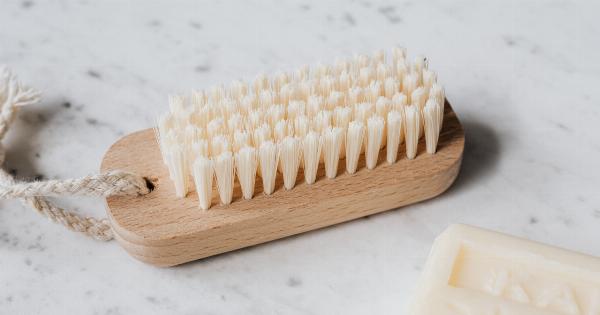Allergens are substances that can cause an immune system reaction in individuals who are sensitive or allergic to them. These allergens can trigger symptoms such as sneezing, itching, watery eyes, and congestion.
While it is common to associate allergens with outdoor environments, such as pollen or grass, many allergens can also be found inside our homes. In fact, the concentration of allergens indoors can often be higher than outdoors, making it crucial to understand how they may be affecting our health.
The Most Common Indoor Allergens
There are several primary culprits when it comes to indoor allergens. Recognizing these allergens can help you take measures to reduce exposure and minimize their impact on your health:.
Dust Mites
Dust mites are microscopic creatures that thrive in warm and humid environments. They feed on dead skin cells and can be found in bedding, carpets, upholstery, and soft furnishings.
These tiny creatures and their waste products are a common trigger for allergies, causing symptoms like sneezing, itching, and asthma attacks.
Pet Dander
If you have pets, their dander can become a significant source of allergies. Pet dander consists of tiny flecks of skin shed by animals with fur or feathers, and it can trigger allergic reactions in susceptible individuals.
Even homes without pets may have pet dander present if previous owners had pets or if it was brought in from outside.
Mold Spores
Mold thrives in damp and poorly ventilated areas of the home, such as bathrooms, basements, and kitchens. The release of mold spores into the air can cause allergic reactions and respiratory issues.
Certain types of mold can even produce toxic substances that can be harmful if inhaled over extended periods or in high concentrations.
Pollen
Pollen is often associated with outdoor allergies during spring and summer. However, pollen can easily make its way inside homes through open doors, windows, or on clothing.
This can be problematic for individuals with a pollen allergy, as exposure to pollen indoors can cause symptoms like sneezing, itchy eyes, and congestion.
Indoor Air Quality and Allergens
The quality of the air inside your home plays a significant role in the presence and concentration of allergens.
Poor indoor air quality can exacerbate allergies and respiratory conditions, making it essential to take steps to improve the air you breathe:.
Ventilation
Proper ventilation is crucial for maintaining good indoor air quality. Opening windows and doors periodically to allow fresh air to circulate can help remove allergens and reduce dampness, preventing the growth of mold and mites.
Additionally, using exhaust fans in areas prone to moisture, such as bathrooms and kitchens, can help remove excess humidity and prevent mold formation.
Frequent Cleaning
Regular cleaning can significantly reduce allergens in your home. Dusting surfaces, vacuuming carpets and upholstery, and washing bedding at high temperatures can help eliminate dust mites and pet dander.
It is essential to use high-efficiency particulate air (HEPA) filters when vacuuming to ensure that allergens are not released back into the air.
Controlling Humidity
Ensuring appropriate humidity levels in your home can discourage mold growth and the presence of dust mites. Using dehumidifiers in areas prone to high humidity, such as basements, can help maintain a healthy humidity level, typically between 30-50%.
On the other hand, during dry seasons, using humidifiers can help prevent dryness in the air, which can aggravate respiratory conditions.
Limiting Allergens at the Source
Implementing measures to limit allergen sources can significantly impact your indoor air quality. For example:.
– If you have pets, keeping them out of bedrooms and regularly grooming them can help curb the amount of pet dander in your home.
– Using allergen-proof covers for mattresses and pillows can prevent dust mites from accumulating.
– Fixing any water leaks or areas of moisture intrusion promptly can prevent mold growth.
Benefits of Reducing Indoor Allergens
Reducing indoor allergens can have numerous benefits for your health:.
– Minimized Allergy Symptoms: By reducing the presence of allergens, you can experience a considerable decrease in allergy symptoms such as sneezing, itching, and congestion, leading to an improved overall quality of life.
– Enhanced Respiratory Health: Maintaining good indoor air quality can help prevent respiratory issues, particularly in individuals with asthma or other lung conditions.
– Better Sleep: By reducing allergens such as dust mites in your bedroom, you can create a cleaner sleeping environment, leading to better sleep quality.
The Importance of Professional Allergen Testing
While taking measures to reduce allergens can go a long way, professional allergen testing can provide valuable insights into the specific allergens present in your home.
Through comprehensive testing, experts can identify the allergens responsible for your symptoms and recommend targeted solutions to improve indoor air quality.
Conclusion
Allergens present in our homes can have a significant impact on our health, causing allergy symptoms and exacerbating respiratory conditions.
By identifying and reducing common indoor allergens such as dust mites, pet dander, mold spores, and pollen, we can significantly improve our indoor air quality and overall well-being. Implementing proper ventilation, regular cleaning, humidity control, and limiting allergen sources are important steps towards creating a healthier living environment for ourselves and our families.






























